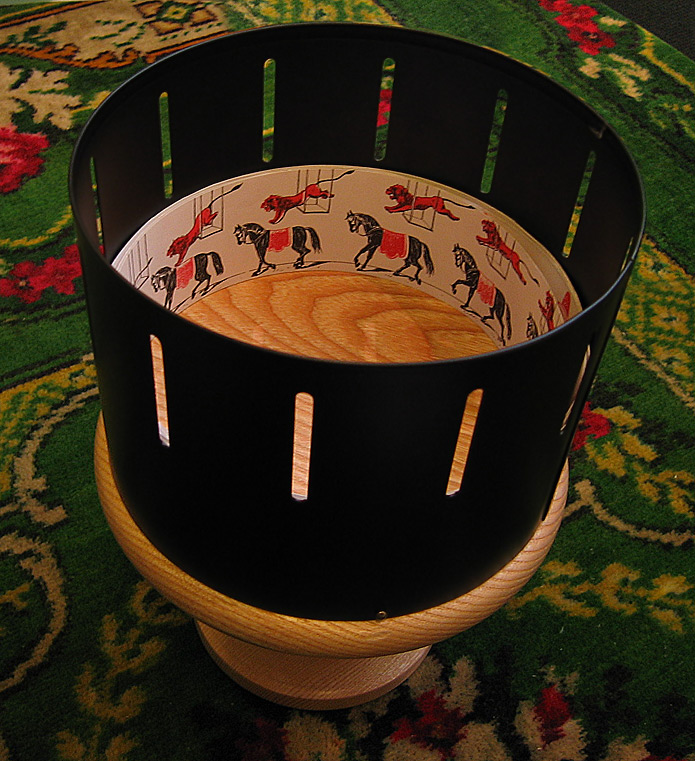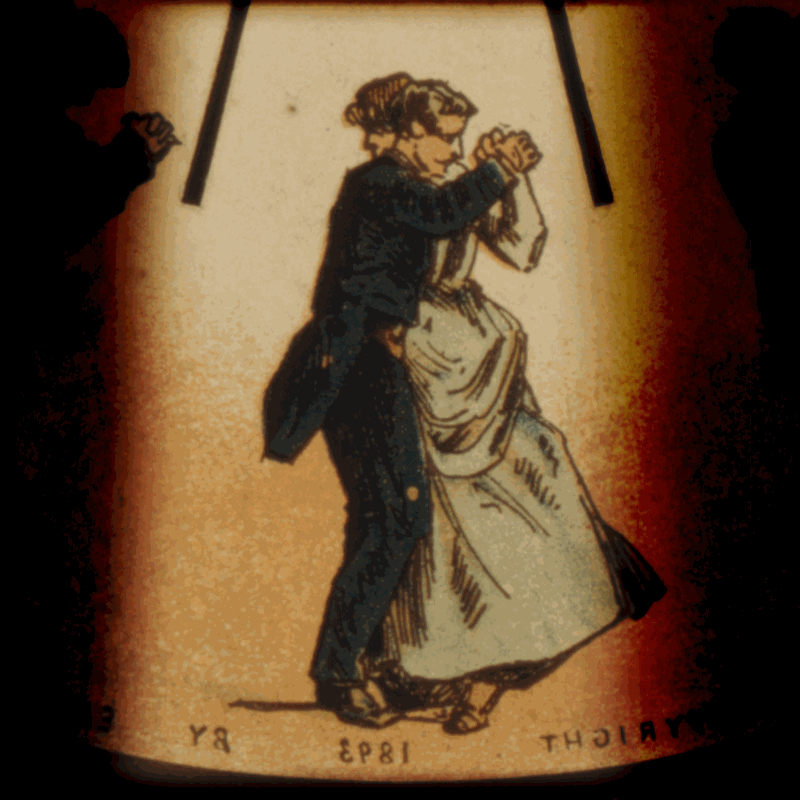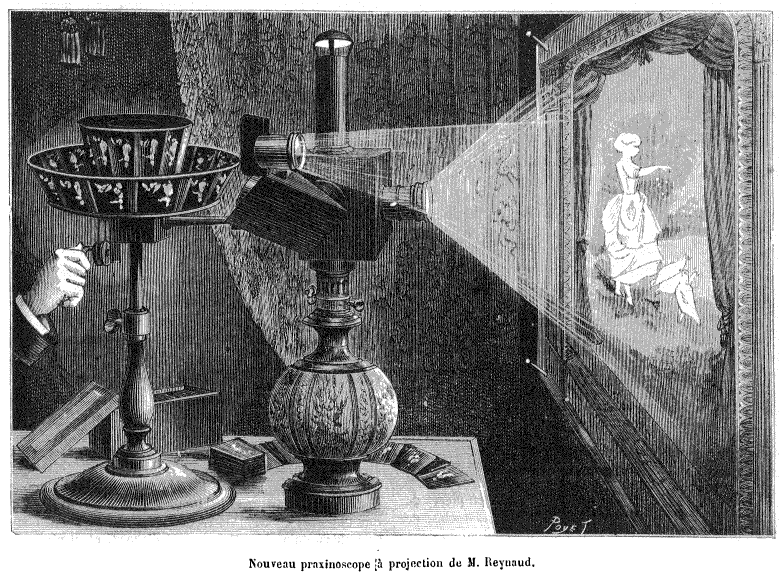More information here
 William Horner evolved the idea of the phenakitoscope with his 'zoetrope'. This was a device that would hold a motion picture inside of a spinning circle, if you were to lay the inside image out it would be a very long rectangle, one could simply replace this to change the motion.
William Horner evolved the idea of the phenakitoscope with his 'zoetrope'. This was a device that would hold a motion picture inside of a spinning circle, if you were to lay the inside image out it would be a very long rectangle, one could simply replace this to change the motion. The praxinoscope was considered to be the succesor to the zoetrope, the praxinoscope was considered to be more succesful as it had actually projected the image rather than you looking at just the image, this meant more people could enjoy stop motion as it was still at this point of the era a fairly new thing with not many people being able to experience its wonders. The device was invented in France in 1877 by a man called Charles-Emile Reynaud. Similar to the zoetrope it used a strip of plastic which had a collection of images. In 1889 Reynaud improved upon his creation and named this the "Theatre Optique" which projected the images rather than using mirrors like the previous device, this allowed larger audiences to enjoy the hand drawn images. However, this was not all success because Reynaud's invention was soon eclipsed in its popularity by the photographic film projector by the Lumiere Brothers. One says eclipsed because even the Lumiere Brothers had doubts over the success of the photographic camera. In modern days we see that these two inventions mutually benefit one another with cameras now being more capable with specifically handling the creation of stop motion and stop motion animation using photographic cameras to produce the motion.
George Pal was born in Hungaria and his use of animation was phenomenal. He raduated from the Budapest Academy of Arts in 1928 and after his stay there he began making films for Hunnia Films in Budapest. He migrated to Europe when the Nazi's came in to power where he bagan working for Paramount Pictures. George created many productions for Paramount including Puppetoons and switched to live action film making producing The Great Rupert. George was presented with an honorary in 1944 for "the development of novel methods and techniques in the production of short subjects known as Puppetoons". George passed away at the age of 72, he has got a star on the Hollywood walk of fame and in 1980 the Academy of Motion Pitcure Arts and Sciences founded the "George Pal Lecture on Fantasy in FIlm" in his memory.
Thomas Edison, the famous American inventor had also made a contribution to the animation movement. He invented the Kinetoscope. This was not a movie projector but it projected images within the device for individual viewing. The device had the basic parts that we still see today in movie projectors. Edison's creation created the illusion of movement by conveying a strip or perforated film within a sequence and displaying this via a source of light and high speed shutter. The sequence you can see to the left is titled "Fred Ott's Sneeze" and not only was this a major movement but it seen the first awarded copyright of a motion in the United States.



2 comments:
this is some good work gary, with good examples and pictures. i would give it a merit
Grade: Merit
This has some good examples and information
Target : Distinction
Post a Comment